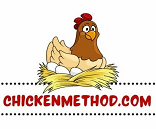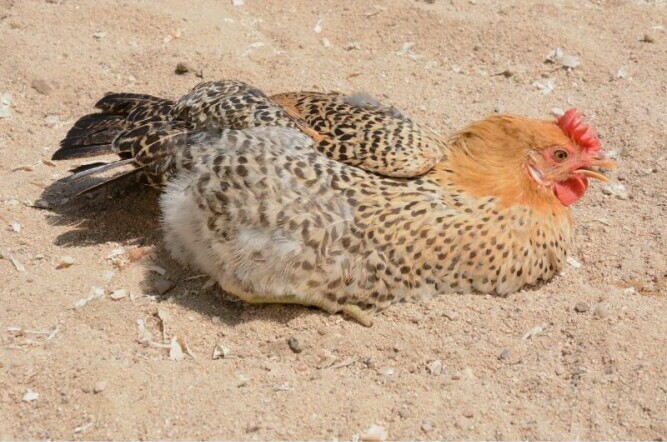
Today, I’m going to be talking about a chicken breed that doesn’t just stand out in the flock; it struts around with a flair of elegance similar to a 12-point Whitetail buck.
Meet the Sicilian Buttercup with a hairdo that the Fonz would envy. It is the only breed with a buttercup comb shape, and if that’s not enough, it has green legs to boot. Yeah, I just said that:)
If you like chickens or are just getting started with backyard chickens, you’ll find out about a bird that brings style and utility in equal measure.
I’m here to help you with an overview of the breed, highlighting characteristics that make it a glamorous yet practical choice for chicken keepers.
We’re looking at its top attributes, which include the ornamental buttercup comb, vibrant green legs, and their illustrious origin.
The appeal of the Sicilian Buttercup reaches beyond its striking appearance. This breed is known for its spirited personality and hardiness, making it a strong contender for various climates.
Whether you’re considering adding them to your farm for eggs, meat, or simply as vivacious yard ornaments, there’s a lot to learn and love about these chickens.
Buttercup Comb, Green Legs, and Heritage
Let’s zoom in on what makes the Sicilian Buttercup chicken stand out in a flock compared to other breeds.
I’m talking about their signature buttercup comb. This comb is a crown-like arrangement of flesh atop the bird’s head, characterized by a single row of points and an additional cup-shaped crown squarely in the center.
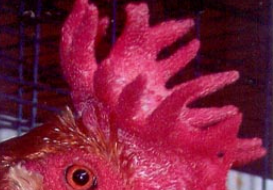
This isn’t just a mere aesthetic quirk; the comb shape can influence a chicken’s adaptability to weather conditions.
Now, it might be time to look down and notice another striking feature – their legs. Sicilian Buttercup chickens sport an unusual shade of green on their legs.
This isn’t a feature you see on the average chicken walking the barnyard. It’s one of those curiosities that draw breeders and chicken show folk alike, adding a unique touch to their stylish presence.
The Sicilian Buttercup’s leg color is a result of the combination of two layers of skin on the legs. The underlayer is blue. The outer layer is yellow, like the rest of the chicken. Of course, blue and yellow make green.
Origin stories are always fascinating, and the Sicilian Buttercup’s begins on the island of Sicily in Italy.
With a heritage that boasts Mediterranean flare and hardiness, I find their historical roots add depth to the breed’s character.
Brought to the United States over a century ago, they’ve been captivating onlookers ever since. The importance of breed preservation cannot be overstated—it ensures that these unique traits are valued and conserved for future generations.
That reminds me… the Sicilian Buttercup is rare, so if you get a chance to breed them, you will be doing the chicken world a favor.
More Than a Pretty Bird
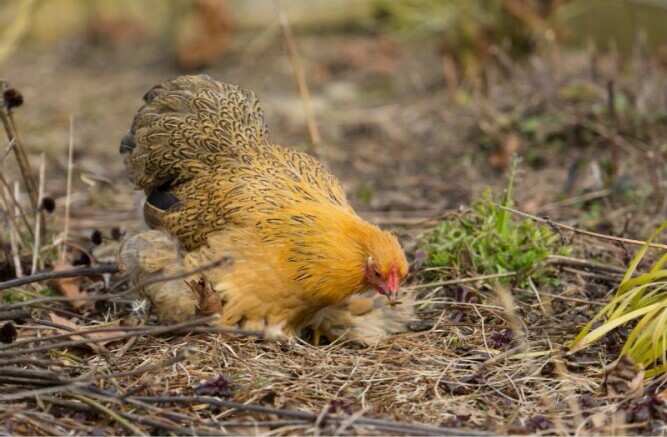
Now, let’s focus on the practicality of having Sicilian Buttercup chickens on your farm or backyard. They’re certainly eye-catching, but what else do they bring to the table? This section covers everything from their egg-laying to their suitability for various poultry roles.
If you’re curious about their egg-laying prowess, Sicilian Buttercups can be considered modest producers. Generally, they lay about three eggs per week, which adds up to a quaint sum of 150 to 200 eggs annually.
The eggs are medium-sized and exhibit a delightful cream color, contributing yet another unique touch to this already distinctive breed.
Weighing in at about 4 to 6 pounds for hens and slightly more for roosters, they’re not the heaviest of birds.
This means they’re not typically favored for meat production. Their svelte size puts them more into the ornamental or show birds category, yet you shouldn’t discount them entirely as dual-purpose breeds. They can still provide a modest yield of eggs and the occasional table fare.
When it comes to weather, they’re a hardy bunch. Their Mediterranean origins lend them a natural resilience to heat, meaning they’re more comfortable than most during those long, sultry summer days.
However, they’re not as robust in the face of a harsh winter. If you’ve read my articles on frostbite, you know that large combs and freezing temperatures are not a good combination. It’s crucial to balance their environmental settings and provide additional care when temperatures drop.
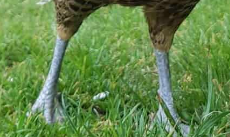
Regarding temperament, the Sicilian Buttercup has earned a reputation for being active and alert. This spirited nature can translate into a chicken that’s more independent, often preferring forage over cuddling.
While they might not be the first to hop into your lap, they are known to be friendly enough if raised with frequent handling.
Speaking of foraging, these chickens display an inclination to scratch and peck around. This can work beautifully for you if you’re aiming for a more self-sufficient flock.
They’re quite good at finding a significant portion of their food, which can save you on feed costs in the long term if your setup allows for free-ranging.
Sicilian Buttercups are generally healthy birds, but as with all breeds, it’s wise to be vigilant about potential diseases. Ensuring they’re provided with a clean environment, vaccinated if necessary, and monitored for health issues will go a long way in prevention.
Besides extra attention during cold weather, their special care needs include adequate space to roam and exercise their industrious legs. And just because they aren’t needy doesn’t mean they don’t enjoy a treat once in a while.
Additionally, secure nighttime accommodations are a must, especially given their proclivity for exploration and foraging, which might make them more susceptible to predators.

Embracing the Uniqueness of the Sicilian Buttercup
So there you have it. The Sicilian Buttercup isn’t your everyday chicken. This breed stands out for its stylishly unique comb, eye-catching green legs, historical roots, and moderate utility in your backyard coop.
These birds aren’t the heaviest layers out there, but they do grace us with a delightful array of cream-colored eggs.
They’re neither heavyweight champions nor scrawny contenders; they fall into a sweet spot, making them versatile enough for those considering them for either eggs or meat—or perhaps a bit of both.
They’re reasonably robust in terms of climate resilience, adapting well to toastier days and cooler nights, which is great news for farmers and hobbyists in variable climates. You’ll find their temperament lively yet agreeable, ideal for a peaceful backyard or farm scene.
They’re good foragers, meaning they’ll help control pests and will be pretty content as they roam and graze, reducing your feed cost in the long run. Plus, a strong immune system is part of their package, but like all living things, vigilant care is necessary to keep them thriving.
I really hope that your journey with the Sicilian Buttercup is as rewarding as the breed is striking. Whether it’s for their eggs, their company, or just the sheer joy of watching those vibrant legs strut around, they’re a breed that promises to enrich the atmosphere of any chicken yard.
